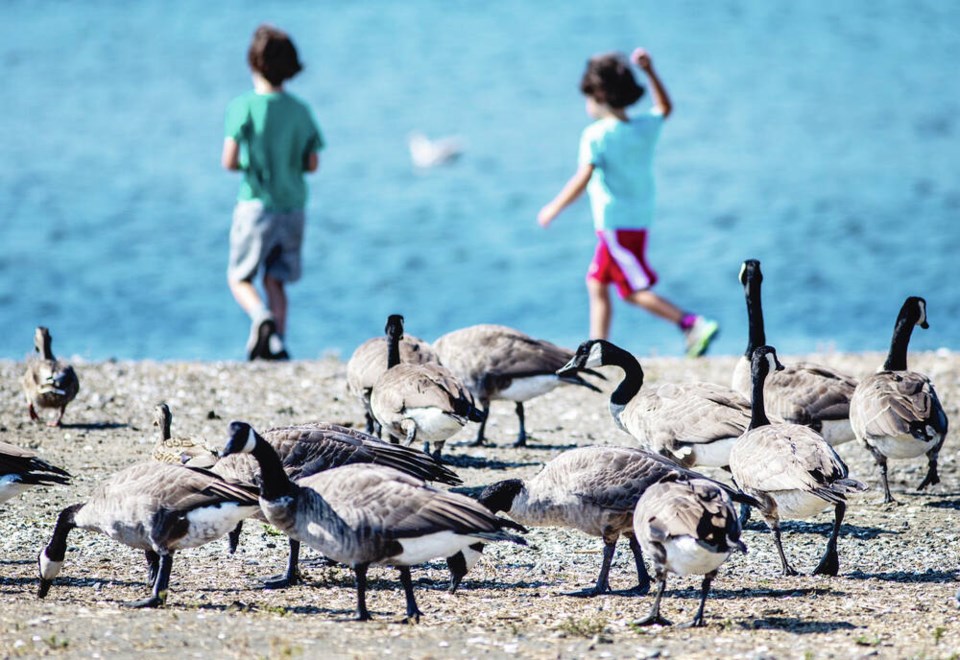Killing Canada geese in the capital region would only leave room for more geese to move in, says an animal rights advocate who opposes the cull.
Jordan Reichert of the Animal Alliance of Canada says the Capital Regional District should instead focus on modifying the birds’ habitat — everything from hanging strings above fields to deter geese from landing to installing large boulders, which geese do not like — and using trained people to addle their eggs.
“Culls don’t really work,” Reichert said. “When you cull the population of geese, you are creating better opportunities for the surviving goose population to flourish.”
The CRD board votes Feb. 8 on whether to adopt a goose-management service that would include addling eggs, mapping, monitoring and public education, but would also allow for goose culls
Expanding numbers of Canada geese in southern Vancouver Island have led to worries about damage to delicate ecosystems and crops, playing fields and parks, where geese feed and leave feces on the ground.
Proper habitat modification has been successfully adopted elsewhere, Reichert said Wednesday.
A report that was partly funded by the Animal Alliance on how to modify habitats to reduce conflicts with geese notes that the birds prefer environments with low vegetation next to open water — typical landscape in parks, which often have mowed lawns.
Recommendations include reducing sightlines so the area is less appealing to geese, which feel safer from predators when they are in open spaces, and growing plants other than grass, since the birds prefer young grass shoots.
Other suggested steps include creating buffers of larger plantings to deter geese from hauling themselves directly out of water onto grass. Rocks, tall quarry stones, decks and boardwalks that rise vertically from the water can help block access to the shore.
Additional techniques include scarecrows, noisemakers, balloons and trained dogs that can herd geese away, as well as installing mechanical barriers, the report said.
If the goal is to reduce conflicts for groups such as farmers, a cull won’t be effective, since it just creates space for newcomers to move in, Reichert said.
“For farmers, that’s not really a solution at all,” he said. “A cull is not going to really change the habitat or the landscape in a way that is going to get rid of the conflict.”
Egg addling is a better way to reduce populations than shooting geese, he said.
Reichert also questions whether the Canadian Wildlife Service would provide permits to the district for a cull, noting the district would have to show that it has done its due diligence on alternatives to culling before permits would be approved.
Reichert said he plans to make a presentation to the district’s board and has been talking to district staff as well, to ensure the CRD has “all the information at its disposal so they can make decisions with the best evidence”


